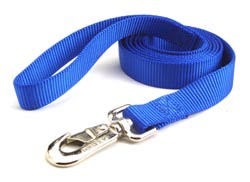Did you know that owning a dog could help you lose weight? This is especially true if the canine is a large breed. Of course dog ownership regardless of size is not the primary cause in assisting people with weight loss, but rather a motivating factor.
A study conducted by researchers at Liverpool University studying why some pets are exercised more than others found that owners of large breeds are more motivated to walk their dog than smaller breed owners. Although some canine breeds require more exercise than others, the size of the dog really does not matter with some smaller breeds requiring just as much exercise as their larger counterparts.
The Liverpool University researchers polled more than 600 dog owners regarding what inspired them to exercise. A total of 66% responded that owning a dog encouraged them to walk more. This phenomenon has been called the “Lassie effect.” Liverpool University researcher and population health expert Dr. Carri Westgarth said the health-boosting aspect of the dog-human relationship has been dubbed the Lassie effect “due to the iconic television character’s ability to perform life-saving acts.”
Interestingly, large breeds were walked more often than smaller breeds, and more often than dogs that were sick or overweight. The study also revealed that owners who believed their dog enjoyed exercise were more likely to take their dog out as were owners very attached to their animal. According to the journal BMC Public Health, owners that felt exercise would keep their dog healthy or would stop it from barking were more likely to take their dog for a walk. “There appears to be something special in the way owning a pet dog makes people feel motivated or obliged to go for a walk compared to other factors that can encourage us to exercise,” said Dr. Westgarth.
The researchers also point out that approximately 40% of people living with a dog do not walk their pets and that many could walk them more regularly. Per Dr. Westgarth, “[The] team’s findings could be used to encourage more people to walk their dogs…by changing perceptions of the amount of exercise older and smaller dogs require.” This article was adapted from an October 4, 2016 story in the IOL Property Lifestyle section titled “Big dogs can help you lose weight.”
The cancer usually develops on the ears, face, eyelids, bridge of the nose and sometimes toes, although it can occur anywhere on the body. The lesions appear as ulcers (with or without scabs) or as nodules with a rough surface similar to a wart. Ordinarily these kinds of lesions grow slowly. Early detection of solar-induced carcinomas is vital because a range of treatment options is available early on. “The problem is that early lesions can look like a simple scratch or scab that may even heal before the lesion again declares itself,” says Dr. Balkman.
The exceptional ability of cats to hide signs of serious disease complicates the identification process. That is why these tumors are often diagnosed in their advanced stages.
Extensive Diagnosis
The initial step in diagnosis is typically a biopsy preceded by a work-up procedure that includes routine blood work prior to sedation. A veterinarian administers the amount of anesthesia needed to obtain an adequate enough biopsy to confirm the presence and degree of invasiveness of SCC. Lymph node biopsies can also be performed to determine if the tumor has spread. Additionally, x-rays and computed tomography (CT) scans can provide more information. The initial diagnostic workup can cost from $1200 to $1500. The biopsy can cost between $250 and $500.
Treatment
Surgery, radiation and chemotherapy have been the mainstays of cancer treatment. Radiation and chemotherapy however, destroy both normal healthy cells and cancer cells. This is where more targeted treatments can be beneficial. Standard chemotherapy destroys rapidly dividing cells that include both normal and cancerous cells. In one type of targeted treatment, drugs are utilized that block the growth and spread of cancer by interfering with specific molecules expressed by the cancer cells.
According to Dr. Balkman, toceranib phosphate (Palladia) is a targeted anti-cancer drug being investigated for use in cats. Palladia is a small molecule inhibitor approved for use in dogs with mast cell tumors that has shown to be effective with other types of tumors. The drug targets a number of molecules involved in cancer cell growth and survival by disrupting molecular signaling pathways that in turn stop the cells from growing and lead to death of the cancer cell. Although more studies are needed to determine the drug’s efficacy in cats with SCC, the preliminary data on the use of toceranib phosphate in cats shows it is well tolerated and safe.
Oral tumor surgery requiring partial jaw removal can cost between $2500 and $3500, contingent on the size of the tumor and duration of the surgery. Radiation therapy is also commonly used in the treatment of oral squamous cell carcinoma either separately or in conjunction with surgery. When oral tumors become invasive, however, surgery alone is rarely successful, with treatment also including radiation therapy and chemotherapy.



